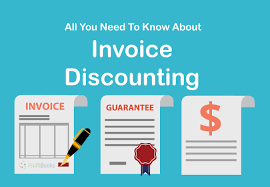Debt factoring has been a means of fundraising for businesses, especially for small-scale businesses. So, having knowledge of this means something; as it has a lot to contribute positively to your business and finances. Therefore, in this article, debt factoring is broken down in a way that even a beginner can relate to perfectly. Here you will get to know debt factoring: what it means, how it works, and examples. Meanwhile, it explains better the advantages and disadvantages of debt factoring, debt factoring companies, etc. Below is the meaning of debt factoring, so keep exploring.
Debt Factoring Meaning
It is just like Invoice factoring is simply a means for a business to raise funds at a discount. However, this fundraising comes from the sales of the business’s outstanding invoices or accounts receivables to a third party usually a factoring company. Meanwhile, when these outstanding invoices are sold to the third party, they pay the business a percentage out of the total money involved.
Through this simple means, the business can get quick cash to put back to the business before its clients actually pay off their debt via the factory company. Basically, debt factoring is another terminology for invoice factoring or invoice discounting.
Read More: Invoice Discounting: Explained!! (+ Quick tools & amp; all you need)
How Does Debt Factoring Work?
Generally, it always involves the activities of three parties. The first party is a business; the second party is a client, and the third party is a factoring company. Basically, the third party buys all outstanding invoices from a business and pays the business a major percentage of the total cash. Then, when the client, which is the second party, pays off their debt, the factor balances up the business minus the factoring fee. This is simply the way debt factoring works. Let’s look at the advantages and disadvantages below.
Read Also: Financial Sector: All you should know (+ Detailed Examples)
Debt Factoring Advantages and Disadvantages
The following below are a few advantages:
- Outstanding invoices or accounts receivable are turned into quick cash.
- The business focuses mainly on selling invoices rather than collecting debts.
- It increases the cash flow of a business via accounts receivable, which is quick access to cash.
- The process is easier with the factoring company because it doesn’t necessarily require collateral, unlike loans or overdrafts.
- Debt factoring can also be provided by both traditional financial institutions and invoice factoring
- The facility involved has no limit, therefore it’s best for a fast-growing business.
The Disadvantages
Naturally, everything that has advantages equally has disadvantages, so below are the major disadvantages.
- The high cost of the factoring fee.
- Several factors and Invoice sales expenditure determine the percentage charged by the factoring company on each invoice.
- It can affect the buyer and seller relationship.
Read Also: Microfinance: Definition, Importance, History, Institutions (+ Loan details and Tips)
Is Debt Factoring Short or Long term?
It is an outward, short-term source of finance for a business. It is a short-term source of finance together with bank overdrafts and trade creditors. However, a business can raise funds by selling its outstanding sales invoices (receivables) to a third party (a factoring company) at a discount.
Debt Factoring Examples
A business sells its goods for about $200,000 per month. Then 60 days interval was given to its clients to pay every outstanding invoice. Bringing it down to the average level, the business has about $300,000 unpaid invoices by clients at a given time. Then, the business has to raise funds to enhance its working capital.
Currently, the business has up to 90% of its invoice value cash at hand ($280,000). Now, the factor has to buy the invoice payment from the clients. However, 10% value of the invoice will be sent to the business typically around 3%. The business, therefore, receives around $15,000, which costs them about $7,000 in this example.
Invoice discounting vs. Debt Factoring
In order to comprehend how it operates, it is necessary to distinguish between debt factoring and invoice discounting.
Invoice discounting entails partnering with a lender or financing organization to borrow money against your outstanding invoices, as opposed to debt factoring. In this approach, invoice discounting or invoice financing is more like a standard business loan or line of credit; if your customer pays the invoice, you’ll reimburse the lender the amount they loaned you, plus any fees.
However, much of the confusion between debt factoring and invoice discounting stems from the use of the term “discounting,” as debt factoring is sometimes marketed as selling invoices or accounts receivable at a discount.
Therefore, it is much simpler to refer to invoice discounting as invoice financing, as the words are interchangeable.
Consequently, the second major distinction between debt factoring and invoice discounting (or financing) is who is responsible for collecting payments on outstanding bills.
With debt factoring, the factoring company acquires your accounts receivable and assumes responsibility for debt collection. With invoice financing, you retain ownership of your receivables and are thus responsible for collecting payments from your clients.
Utilize our invoice factoring vs. invoice financing comparison guide for more information on the subtle distinctions between these two arrangements and a review of the pros and cons of each.
Types of Debt Factoring
Now that we’ve covered every aspect of how it operates, let’s examine the many sorts of debt factoring.
However, there are a variety of arrangements you can create with your factoring company (or those they offer) that make up these distinct factoring types.
Repayment Factoring
In a recourse factoring deal, your company is liable if the customer fails to pay the factoring company for the invoice they owe.
Say, for example, that the client in our previous scenario never paid their $100,000 invoice and the factoring company is unable to recover the debt. Then, under a recourse factoring agreement, you are accountable for paying the factoring provider the total invoice amount of $100,000.
This sort of debt factoring is favorable for factoring companies since it reduces the risk they assume by purchasing your receivables.
Consequently, you will likely find that the majority of businesses offer recourse factoring solutions.
Recourse-Free Factoring
Non-recourse debt factoring is the opposite of recourse debt factoring, as the name suggests. In this instance, if a customer fails to pay their invoice and the factoring company is unable to collect the debt, the company is liable for the uncollected debt.
With non-recourse factoring, you are not responsible for the debt if the consumer fails to pay. Compared to recourse factoring, finding a company willing to offer non-recourse terms is less common, and those that do will usually charge higher factoring fees.
Total-Sales Factoring
In contrast to recourse vs non-recourse debt factoring, whole-turnover factoring refers to the number of invoices you sell to the factoring provider.
In a whole-turnover factoring arrangement, you sell all of your invoices to the factoring firm you work with, and the factoring company buys each invoice as soon as it is issued. With this sort of debt factoring, you ensure a constant cash flow, which is essential as startup funding and if you have experienced cash flow issues in the past owing to late invoicing.
Keep in mind, however, that routinely factoring your invoices will incur large factor fees.
Selective Weighting
In contrast to whole-turnover factoring, selective factoring allows you to choose which invoices to factor in. In this arrangement, you have a great deal more control over your financing and access to cash, and you also save money on the expenses associated with whole-turnover factoring.
In addition, while whole-turnover factoring may be useful for firms with customers who have a history of paying late, selective factoring will likely perform better if you know that the clients associated with the invoices you choose to pay on time.
Local Factoring
Spot factoring refers to the sale of a single invoice to a factoring company. In lieu of entering into a factoring relationship, as in these other types of debt factoring, you do a one-time transaction with a factoring firm.
Spot factoring is advantageous to firms, as they can gain an advance on cash without committing to a monthly or annual agreement. However, this is a riskier kind of accounts receivable finance for the factoring company.
Consequently, you may find that a factoring provider requires a minimum invoice amount or charges higher costs for spot factoring.
Cost of Factoring Debt
Considering the various types of debt factoring and the operation of this type of financing, you may be curious about the cost of debt factoring.
Although our debt factoring example provided some insight into charges, let’s break them down in greater detail.
The cost of debt factoring is determined by a variety of factors, including the factoring business you work with, the type of agreement, and the payment history of your consumers.
In the end, as we saw in the preceding debt factoring example, the factor rates and fees you’re charged do not accurately reflect the total cost of debt; therefore, you should use an invoice factoring calculator to estimate your APR to get a better idea of how much any debt factoring agreement will cost your business.
Debt Factoring Companies
There are over thousands of factoring companies in the world today but the four listed below took the front lead.
#1. AltLINE
This is a southern bank company good at handling large invoices. it serves as a direct lender with no middleman fee, equally transparent to the business client. This service lent by altLINE saves more money on large invoices.
This is a type of factoring company good for invoice management. It has an online portal called MyTriumph web portal, which provides clients with reports. This helps businesses to know the status of their invoice payments.
#3. RTS Financial
They are the best in trucking and the freight industry. Meanwhile, the company makes the provision of the lease in equipment, and software relating to trucking with a mobile app.
As a small business owner, Paragon Financial Group is the best, it’s good for businesses struggling with invoice factoring. Their relatively low rates help small-scale businesses retain more of their profit for survival.
What Is an Example of Debt Factoring?
For example, a company must raise funds to strengthen its liquidity. The debt factoring provider then receives the invoice payment from the consumer and distributes the remaining 10% of the invoice value, MINUS a charge, which is normally 3%, to the business.
Is Factoring Considered a Loan?
It is not a loan because neither party issues nor takes on debt as part of the deal. The company is free to do whatever it wants with the money it gets in exchange for the accounts receivable.
Who Pays the Factoring Company?
The factoring company pays you the majority of the invoiced amount immediately, typically up to 80-90% of the value, after verifying that the invoices are valid, Your consumers make direct payments to the factoring company. If necessary, the factoring company pursues invoice payment.
How do factoring companies make money?
When a business factors its invoices, the factor (or factoring company) advances the company up to 90% of the invoice value. When the factor receives the entire payment from the final customer, the remaining 10% is returned to the firm, minus a factoring fee.
What is a typical factoring fee?
The average cost of factoring bills is normally between 1% and 5%, depending on these criteria. Remember that the factoring rate is only a portion of what you may ultimately pay. The more invoices that are factored in, the more that is billed.
How do you get out of factoring?
Once you’ve decided to leave your current factor, you’ll need to give notice. To get out of a contract with a factoring company, you have to send them written notice. Most of the time, this happens 30–60 days before the renewal date.
Is factoring a good business?
Invoice factoring works well for business owners who need quick money, have dependable clients who pay on time, and can afford the fees associated with selling invoices to a third party. If this describes your company, you may profit from a factoring solution.
Conclusion
Rather than creating a debt on the balance sheet, selling outstanding invoices creates secure cash flows. Debt factoring has its examples, advantages, and disadvantages. Therefore, it can be an ideal solution if a business has a problem with its cash flow due to slow payment from clients. Know the advantages and disadvantages to know how this works.






